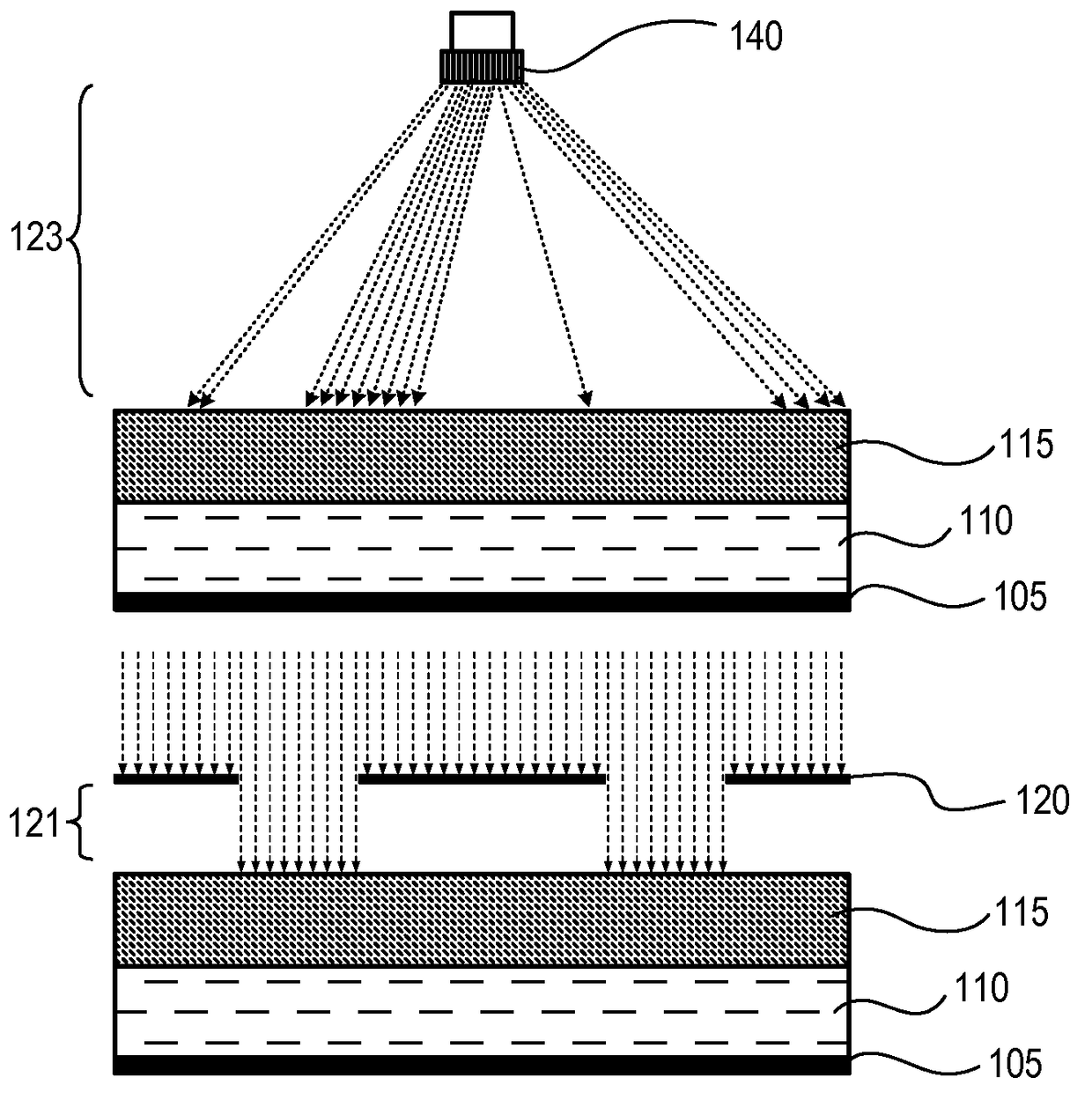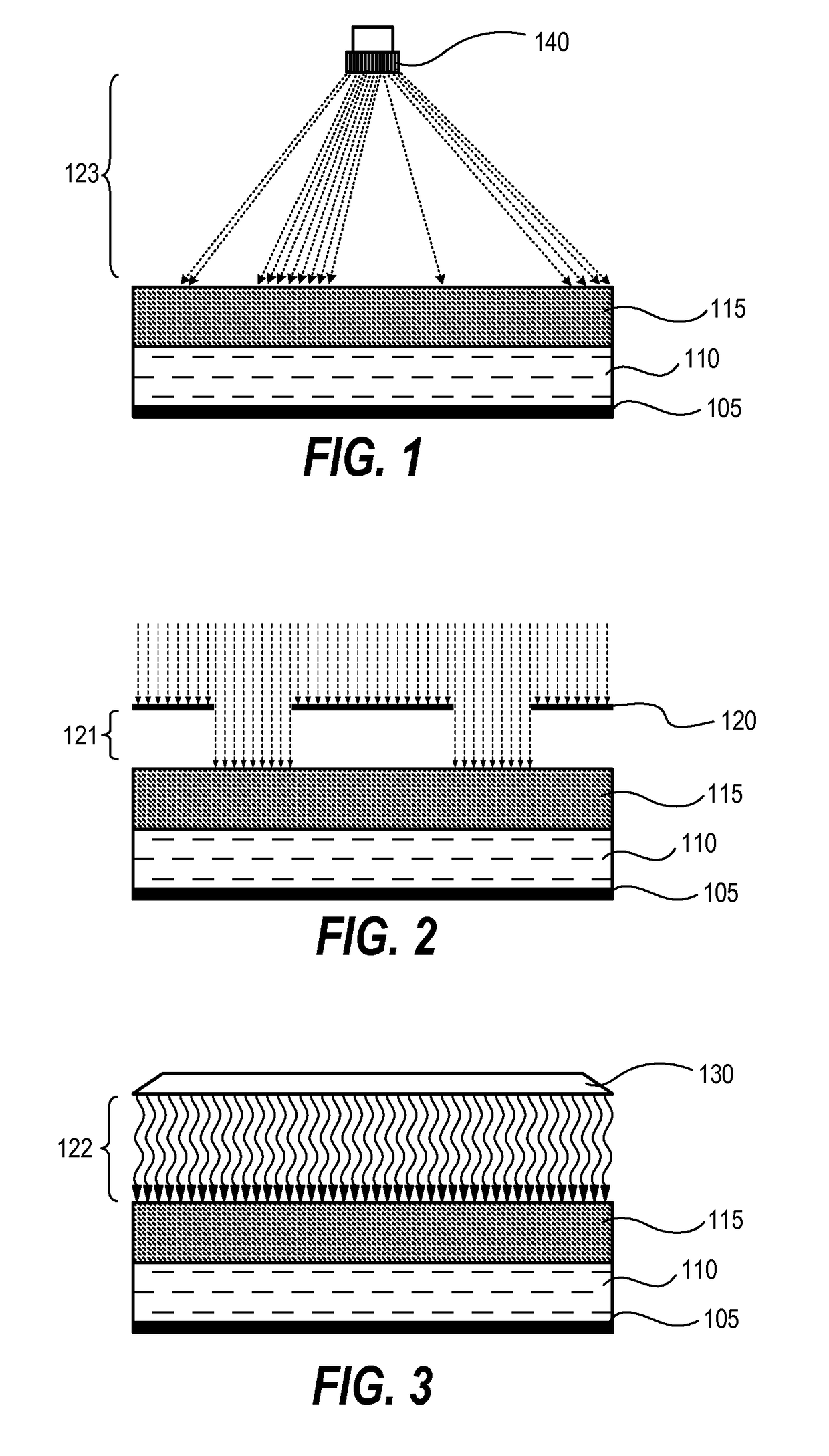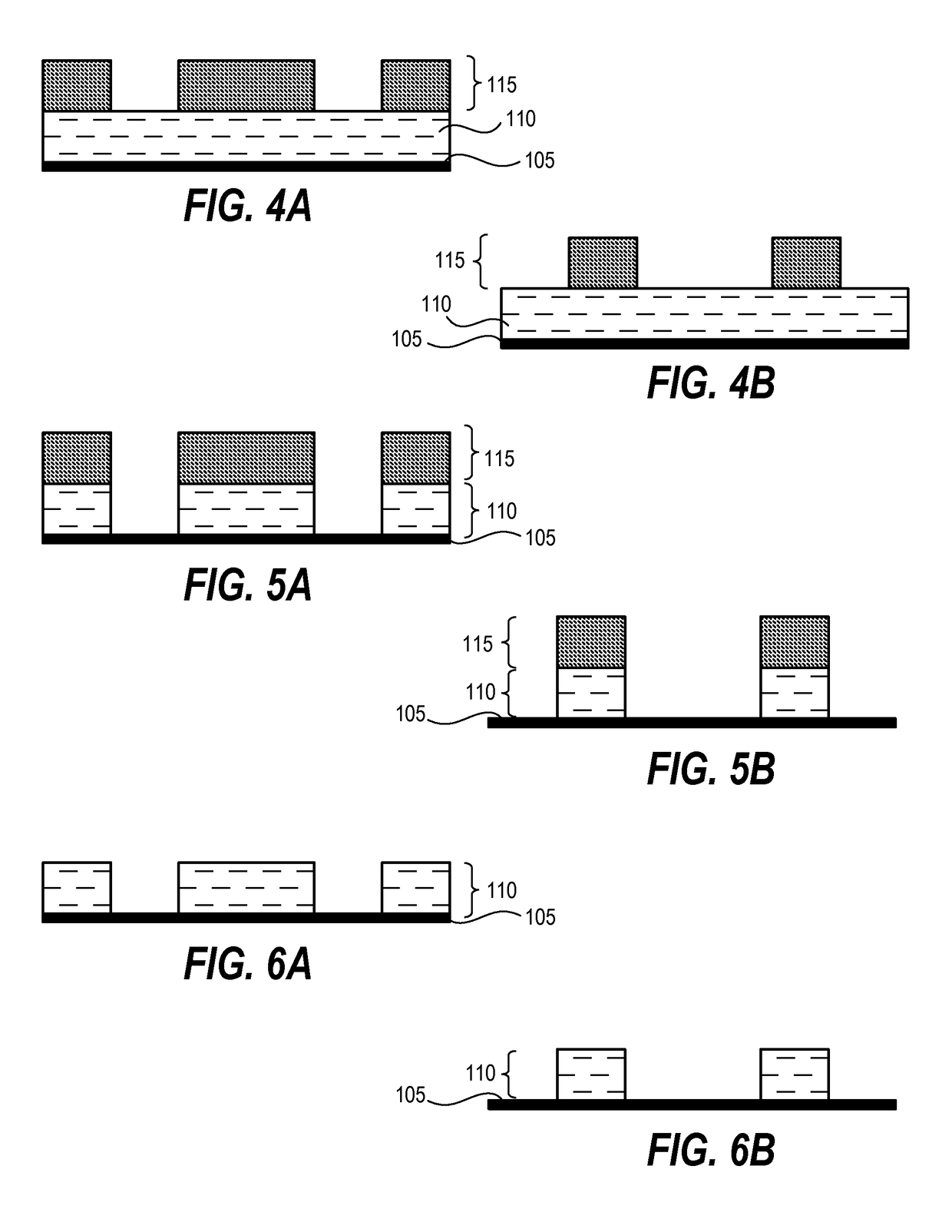Critical dimension control in photo-sensitized chemically-amplified resist
- Summary
- Abstract
- Description
- Claims
- Application Information
AI Technical Summary
Benefits of technology
Problems solved by technology
Method used
Image
Examples
Embodiment Construction
[0019]Techniques disclosed herein include resist compositions for photosensitive chemically amplified resist processing, as well as methods for processing substrates using a photosensitive chemically amplified resist. Such techniques provide CD uniformity control in which minor corrections can be made to a given PS-CAR during processing to result in a relief pattern having improved CD uniformity. Accordingly, radiation-sensitive films can be patterned and fully developed with uniform critical dimensions even when initially patterned using a relatively low exposure dosage, such as with EUV films.
[0020]A photosensitive chemically-amplified resist (PS-CAR) includes a photoresist having a segregated activation capability that enables the generation of chemicals within the photoresist to occur at different times and under different process conditions prior to being developed. In one embodiment, generation of photosensitizer is isolated from acid amplification within the resist.
[0021]In o...
PUM
| Property | Measurement | Unit |
|---|---|---|
| light wavelength | aaaaa | aaaaa |
| light wavelength | aaaaa | aaaaa |
| wavelength range | aaaaa | aaaaa |
Abstract
Description
Claims
Application Information
 Login to View More
Login to View More - R&D
- Intellectual Property
- Life Sciences
- Materials
- Tech Scout
- Unparalleled Data Quality
- Higher Quality Content
- 60% Fewer Hallucinations
Browse by: Latest US Patents, China's latest patents, Technical Efficacy Thesaurus, Application Domain, Technology Topic, Popular Technical Reports.
© 2025 PatSnap. All rights reserved.Legal|Privacy policy|Modern Slavery Act Transparency Statement|Sitemap|About US| Contact US: help@patsnap.com



